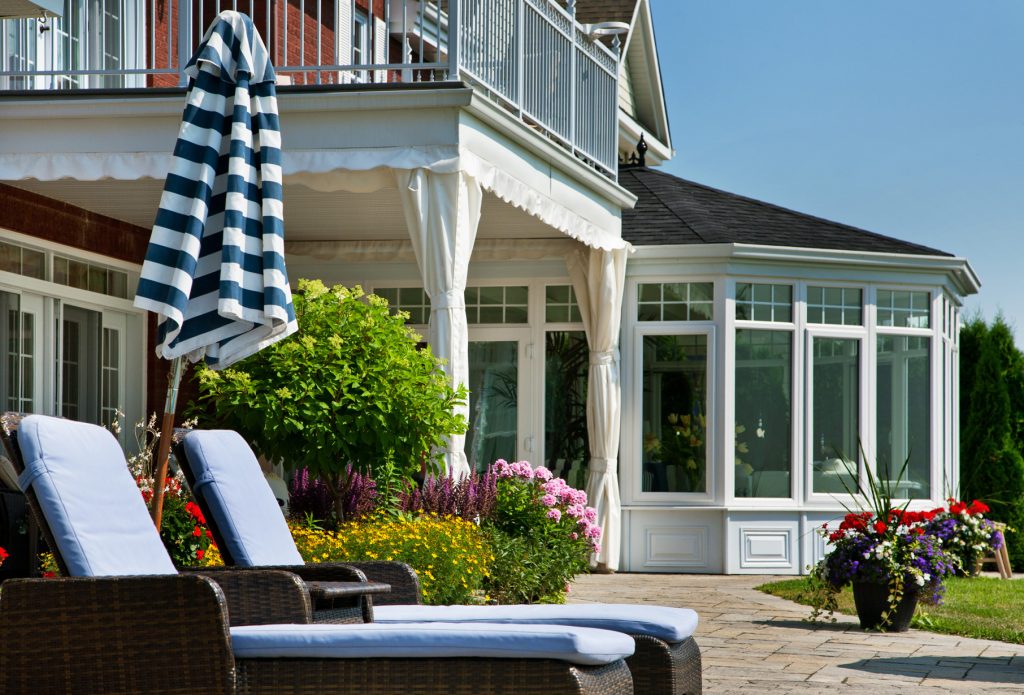
R-value and U-value are terms frequently used in construction and sunroom manufacturing. Both measure specific, important variables in a sunroom to help you better understand the quality of the product you are considering. However, they can be confusing to somebody who hasn’t been exposed to construction guidelines before. This post explains some of the terms surrounding the insulation value of materials and building products, to help you better equip yourself as an informed buyer.
What is R-value?
An R-value measures a material’s ability to resist heat traveling through it. Every material used in a building component contributes to its overall R-value. A higher R-value indicates better insulation and greater thermal performance. It also translates to a more energy-efficient home. Meanwhile, a low R-value makes properly regulating your home’s temperature difficult. High R-value building materials may also be required by local and state governments for those living in heavy snow areas.
Insulation requirements across the United States


The U.S. Department of Energy presents a comprehensive map outlining those unique needs of each area of the United States. For example, those living in southern Florida or Hawaii only need sunrooms with R-values between R-30 to R-49. Meanwhile, those living in the Great Lakes region should consider sunrooms with R-values between R-49 and R-60.
Insulation is also necessary for your flooring. Those in southern Florida or Hawaii only need to insulate the floors of their sunrooms with a minimum R-value of R-13. In contrast, those in the Great Lakes region need to insulate the floors of their sunrooms with R-values between R-25 and R-30. Traditional construction builds homes based off these values, and LivingSpace believes that the best quality sunroom exists within these confines.
LivingSpace Sunrooms offers walls, floors, and roofs with R-values ranging between R-24 and R-52. Consequently, a LivingSpace sunroom is able to withstand the most inclimate weather. LivingSpace does this by using up-to-date Green building and insulation technology. Consequently, we offer the strongest and best insulated sunroom roof system available. This ensures that your room will exceed the International Energy Conservation Code requirements for sunroom additions.
What is U-value?
U-value is similar to R-value, as it measures a facet of insulation. A U-value measures the ability of an assembled building element to resist the flow of heat across it. Some publications refer to it as U-factor. Materials with lower U-values have greater insulating abilities and are more energy efficient.
You can calculate U-value through the sum of a room’s different R-values. This sum includes R-values from windows, doors, and paneling. In practice, the following equation shows a room’s U-value.
- U-value = 1/(sum of all R-value)
High-performing R-values, like those shown in LivingSpace’s sunroom skylights, correlate with high performing U-values. LivingSpace manufactures sunrooms that significantly improve upon nationwide insulation requirements from the U.S. Department of Energy.

Sunrooms with poor U-values can gain and lose heat in a variety of areas. The U.S. Department of Energy says that windows, doors, and skylights can gain and lose heat through the following ways.
- Direct conduction from the glass or glazing, frame, and/or door
- The radiation of heat into and out of a house from room-temperature objects, such as people, furniture, and interior walls
- Air leakage through and around windows, doors, and skylights
A sunroom with poor insulation will be uncomfortable during cold and warm months. Therefore, R- and U-value are important factors to consider while you are shopping. They will impact the usability of your sunroom during seasonal extremes. Finding a company that excels in this category is critical, as you will want to enjoy your four season sunroom from January through December, for years to come.



